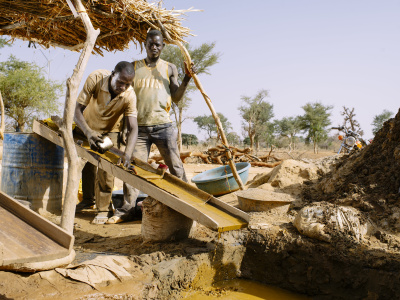
Understanding the use and trade of toxic chemicals in artisanal gold mining: The case of Burkina Faso
In Burkina Faso, artisanal gold mining generates income but also causes pollution and health problems due to the use of toxic chemicals.
Summary
Millions of people in West Africa are engaged in artisanal and small-scale gold mining (ASGM). While it brings in significant benefits in terms of employment and income, its social and environmental costs are very high, in particular because hazardous chemicals such as mercury are used during the extraction process.
This note shines light on the use and trade of toxic chemicals in ASGM in Burkina Faso. It argues that interventions to reduce the use of mercury in ASGM operations need to be designed keeping in mind the complexity of the sector, including the actors involved and the fluid arrangements that they strike to win gold. In fact, mercury and gold trade are closely interlinked. Moreover, mercury has become an integral part in the pre-financing arrangements, a dominant form of funding operations in return for gold. These networks of pre-financiers are involved in the smuggling of gold to avoid paying taxes.
While national and regional bodies are increasingly adopting regulatory frameworks and voluntary mechanisms to reduce the use of mercury, their success hinges upon a degree of formalisation in the sector. This goes against the core features of how the sector is currently organised. Decades of neglect by governments in the region, which have prioritised large-scale mining, has meant that ASGM has been marginalised, largely operating in the informal sector. Traditional structures govern the activity and trust in the state among ASGM actors remains low. ASGM does not just have an economic dimension, but is also embedded in the social fabric and structures of the local communities. This adds an additional layer of complexity to the design of any form of intervention to govern the sector.
Photo courtesy of Ollivier Girard/CIFOR via Flickr




